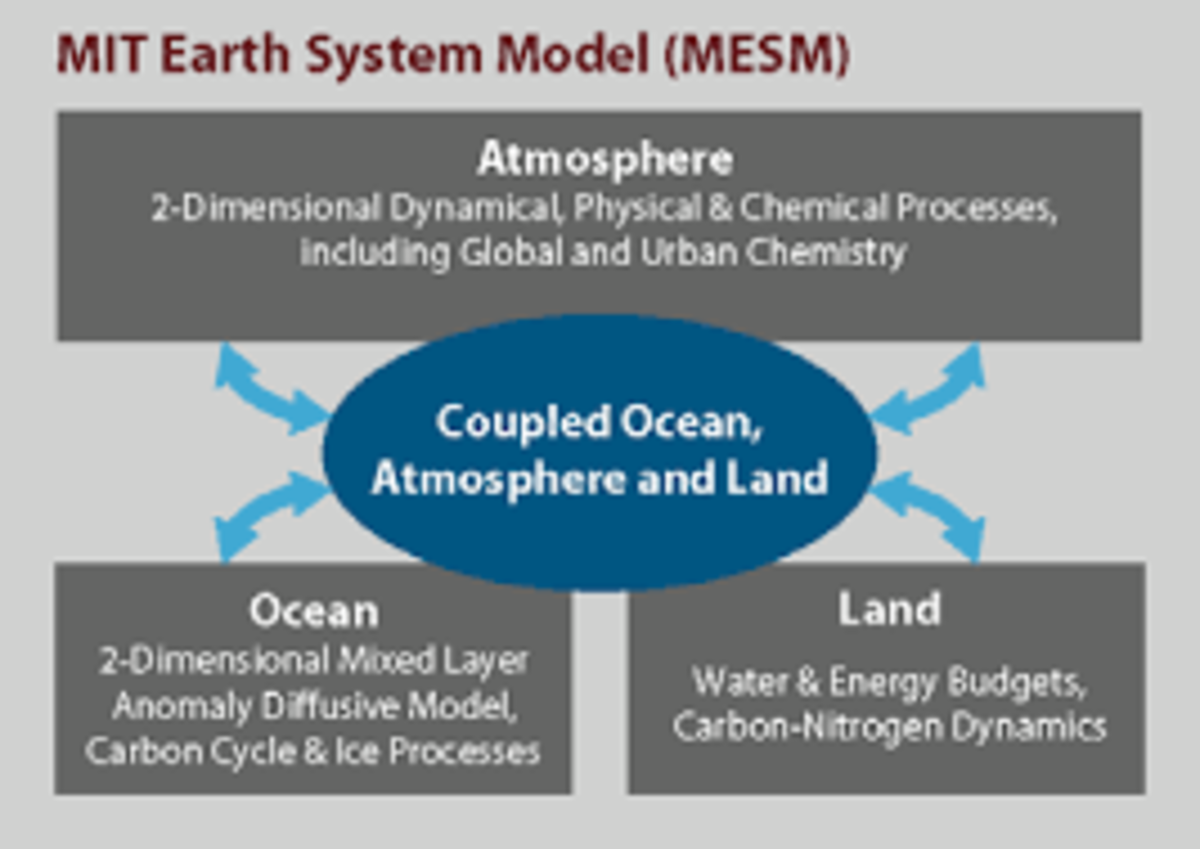PAOC Spotlights
Description and Evaluation of the MIT Earth System Model (MESM)

Results from the latest version of MESM compare favorably with those produced by more computationally intensive models.
The future of the Earth’s energy, water and land resources will depend, in part, on how the climate will change in coming decades. To generate meaningful projections of global climate change, one must take into account two major sources of uncertainty—first, in the level of external forcings to the climate system; and second, in the magnitude of the climate system’s response to those forcings. The MIT Earth System Model (MESM) provides the flexibility and computational speed required to analyze/account for climate system uncertainty while also representing the detailed physics, chemistry and biology that’s typical of more computationally intensive Earth system models—all at significantly less cost.
The computational efficiency of this model allows researchers to run large ensembles of simulations for robust uncertainty quantification within a short time frame. The MESM thus provides an effective tool for modeling the climate system and quantifying uncertainty of its response to external forcings. MESM simulations can be used as a basis for climate risk assessment to energy, water and land resources.
Recently upgraded, the MESM consists of three main components—land, ocean and atmosphere—and represents the processes that shape each component’s evolution and the interactions among these components, essentially serving as an Earth simulator. Despite simplifications made in the model to make it faster and cheaper to run, such as a zonally averaged atmospheric sub-model, the MESM shows generally comparable results to those of more complex models. Comparing the performance of the MESM with that of more computationally intensive Earth system models, researchers at the MIT Joint Program on the Science and Policy of Global Change and collaborating institutions show that the MESM effectively simulates changes in the observed climate system since the mid-19th century as well as the main features of the present-day climate system. In simulations of the impact of varying levels of external forcings on the climate system, the MESM’s results also compares favorably with those produced by more computationally intensive models.
The researchers describe the new MESM's capabilities in a paper appearing in the AGU Journal of Advances in Modeling Earth Systems.
Please note this warning from the publisher: "This article has been accepted for publication and undergone full peer review but has not been through the copyediting, typesetting, pagination and proofreading process, which may lead to differences between this version and the Version of Record. Please cite this article as doi: 10.1029/2018MS001277"
Read this story at MIT Joint Program on the Science and Policy of Global Change.